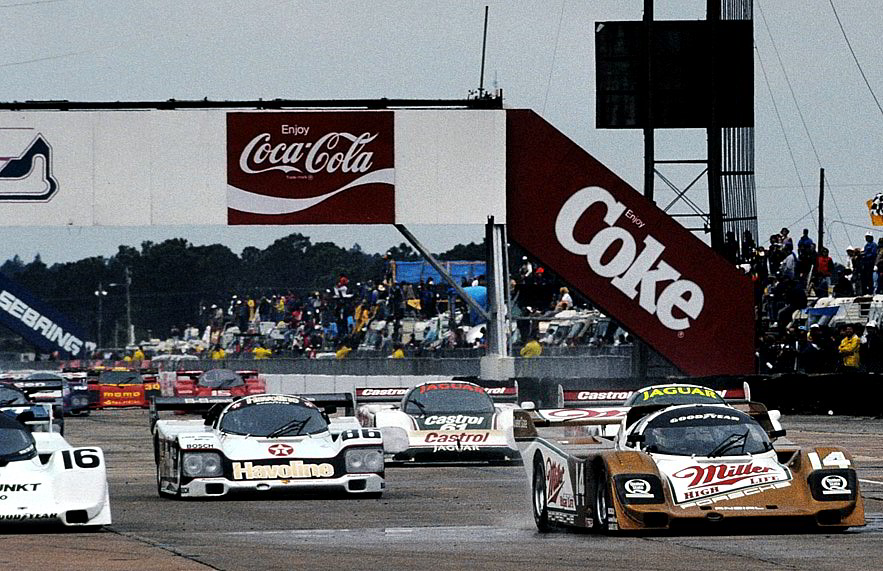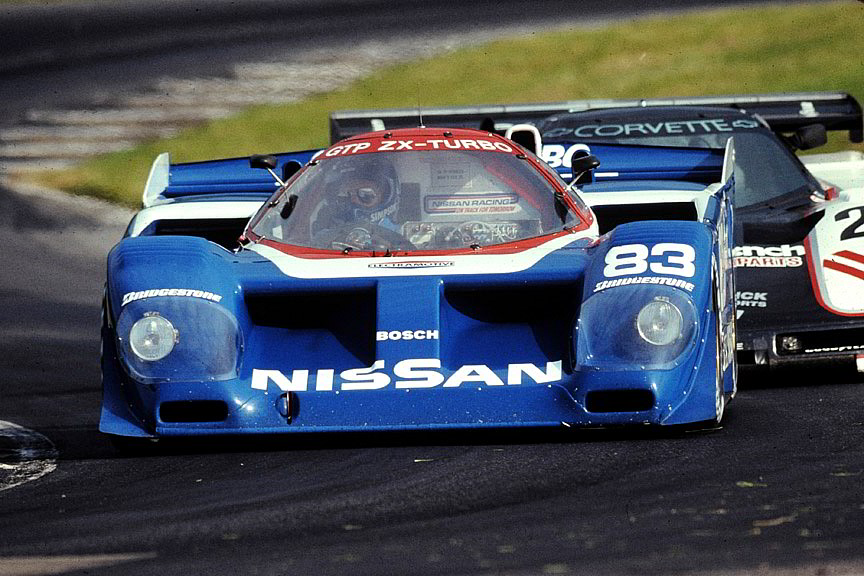Dressing: Group C Curtain Call
 |
 |
 |
Three decades on, Group C still has a powerful hold on the imagination of sports car fans. To celebrate the 80th running of the 24 Hours of Le Mans ,the ACO has a 45-minute Group C race as an appetizer on Saturday morning. It did this before to rave reviews.
There’s a solid historical symmetry to the choice: this year marks the 30th anniversary of Group C’s Le Mans debut. Jacky Ickx’s 1982 win with Derek Bell in their Rothmans-liveried Porsche 956 was his sixth and final victory at Le Mans. Besides, it seems that Group C is where history – Le Mans history, anyway – begins for many race fans that make the pilgrimage to France each June.
The Group C formula – based on little more than fuel consumption, weight and a few dimensions – did not enjoy universal acclaim upon introduction. Turn back the pages and it seems that journalism, even motorsport journalism, is indeed the first draft of history. That first draft was hardly kind to or supportive of the new Group C regs that took off in a new direction in 1982.
Some sporting journals labeled early Group C World Championship races “economy runs" (some were.) But at Le Mans the results pages tell a slightly different story. With the same drivers (Ickx & Bell) in the same marque (Porsche) winning Le Mans in 1981 and 1982 (the dawn of Group C) the new Porsche 956 went four laps farther than the venerable 936 that won the 24 Hours in 1981.
The high-water mark for the formula came toward the end of the decade. Jaguar’s Le Mans victory of 1988 ended a virtual Porsche stranglehold on the world championship and Le Mans. Bonus: the big cats brought British fans to Le Mans in strength. By then Toyota and Nissan had also been lured to Le Mans’ Group C wars.
Along with Porsche, Jaguar, Nissan and Toyota, one of the major-est of the major manufacturers had cast covetous eyes on the 24 Hours. When Peter Sauber’s Mercedes-Benz-powered Group C racers appeared for the 1989 championship season painted silver wearing prominent three-pointed stars on their noses the message was clear: Group C was important.
Technology had triumphed and made the men who wrote the Group C rules in 1981 look like prophets, soothsayers or clairvoyants. Sauber’s three-car Mercedes team came home 1-2-5 at Le Mans in 1989 with 100 liters of Motronic-rationed gasoline to spare! All this and blinding speeds as well.
It was this thunderous – anyone who’s heard a C9s accelerate hard out of Tertre Rouge knows that “thunderous" is not hyperbole – velocity and accompanying success that summoned a profound change in the technological grammar of Le Mans racing.
Those amazed by top speeds of Porsche’s 917 during the previous decade were astonished during practice for the 1989 race. The Sauber C9 that went on to win the 1989 24 Hours set the long straight’s speed record at, according to the ACO, a sobering 253.5 mph! So the Mulsanne was altered, and that changed Le Mans and sports car racing forever. The act of inserting two chicanes in the 3.5-mile straight certainly slowed things and ended Le Mans’ aerodynamic segregation from other circuits. It moved the physics of a Le Mans Prototype closer to mainstream sports car aerodynamic realities.
Ultimately the automotive electronics revolution – led by Bosch’s brilliant Motronic engine management system – made Group C the superstar formula it became. From a series of careful mileage “uber alles" runs in its early innings, Group C (GTP in America) ultimately captured the attention of the fans and lured many marquee manufacturers’ names during the decade when the formula flourished. And that summoned the attention of powerful men with an agenda that had nothing to do with Le Mans, sports cars, endurance racing or the improvement of the automobile.
A meeting in November 1991 near Heathrow airport finally ended all the fun. Incoming FIA President Max Mosley and his vice-president for promotions, B.C. Ecclestone, promoted Formula 1 above sports car racing and the new “F1-flavored" sports car world championship rules left little doubt that the sport’s governing body was taking sides. The fuel-formula Group C racers were banished and a return to rules mandating specific – F1 specific – engine displacement returned to the rule book.
Le Mans staggered with the new F1-flavored sports cars. But in 1994 the last refugee from Group C, (barely disguised as a GT car) won the 24 Hours. The Dauer Porsche 962 returned the glory of Group C to Le Mans.
The glory that was Group C will return to Le Mans at 10:05 on Saturday morning June 16th. As a special bonus, one Derek Bell – 962-star extraordinaire – will take to the Circuit Permanente du Sarthe in Martin Overington’s Porsche 962 still wearing its Kenwood livery from 1988 when Jaguar and Porsche fought one of the greatest Le Mans battles ever – Bell was second in a 962 that year.
So, around 9:45 Saturday morning I’ll try to sneak out of the RLM studio in the media paddock as quietly as possible. If all goes well, by 10:05 I’ll be the lone American hanging on the fence near the Ford Chicane, surrounded by Brits cheering for Jaguar and Derek Bell and the 962 and Group C all over again.
Has it really been 30 years already?
